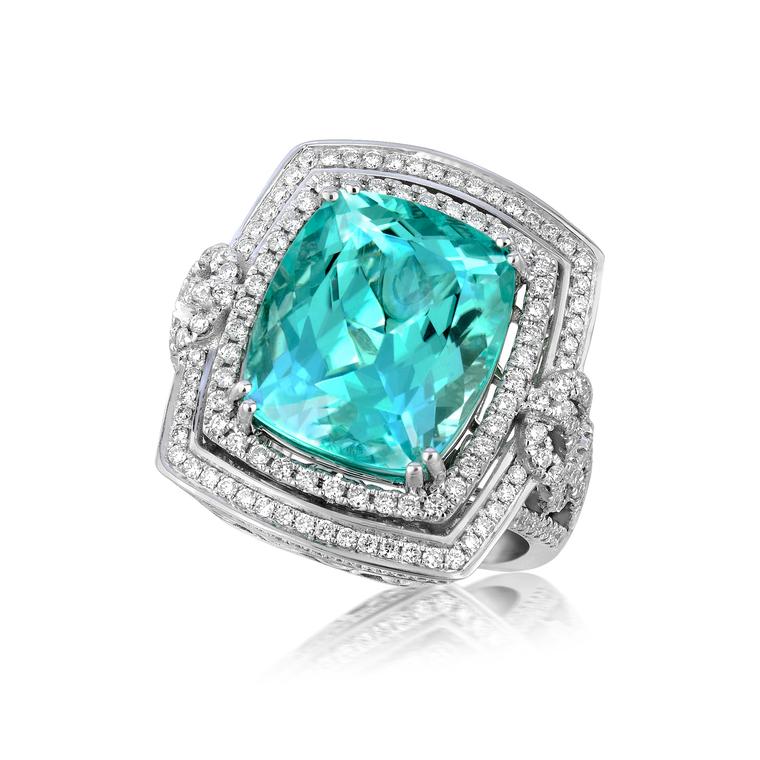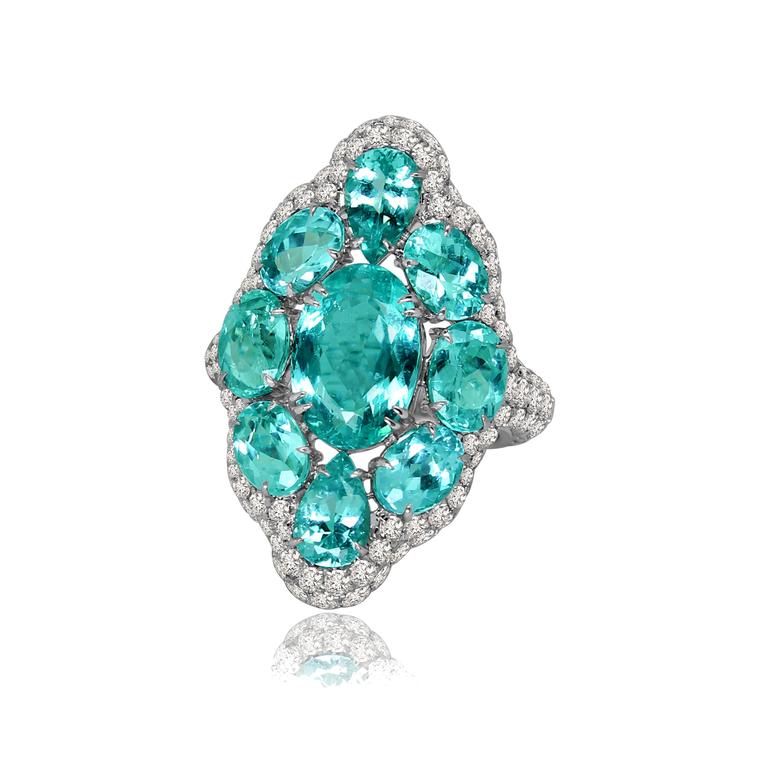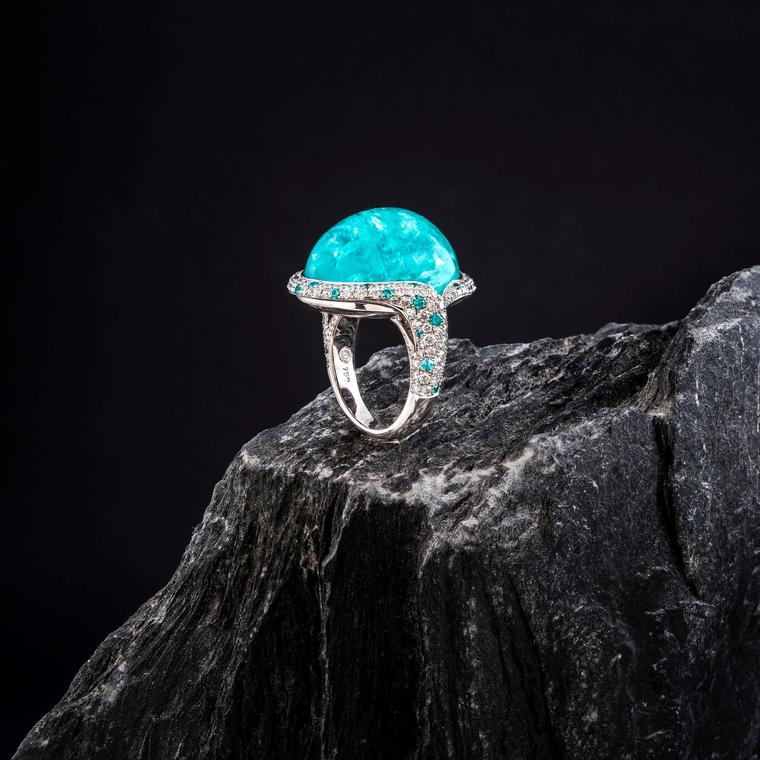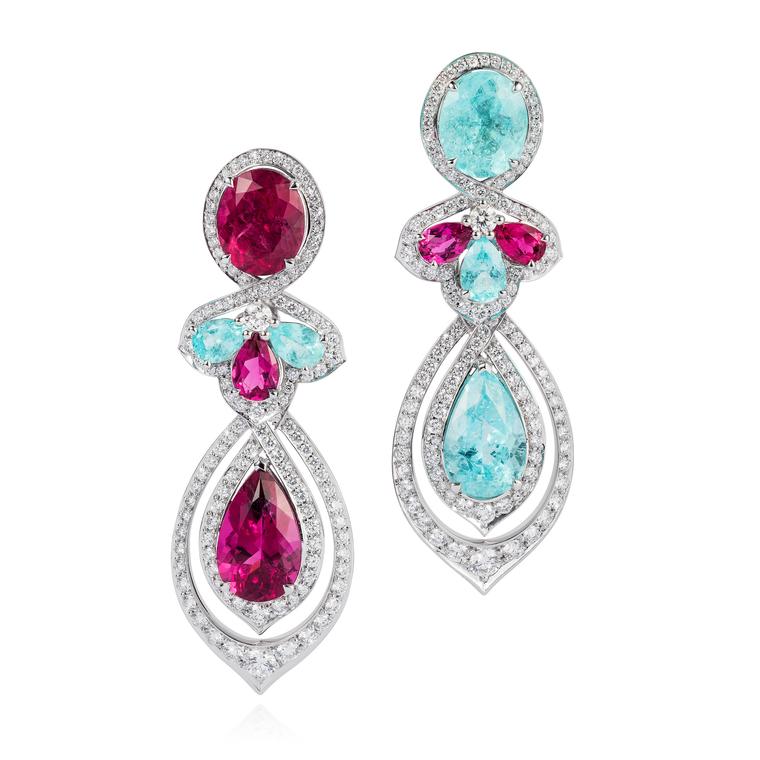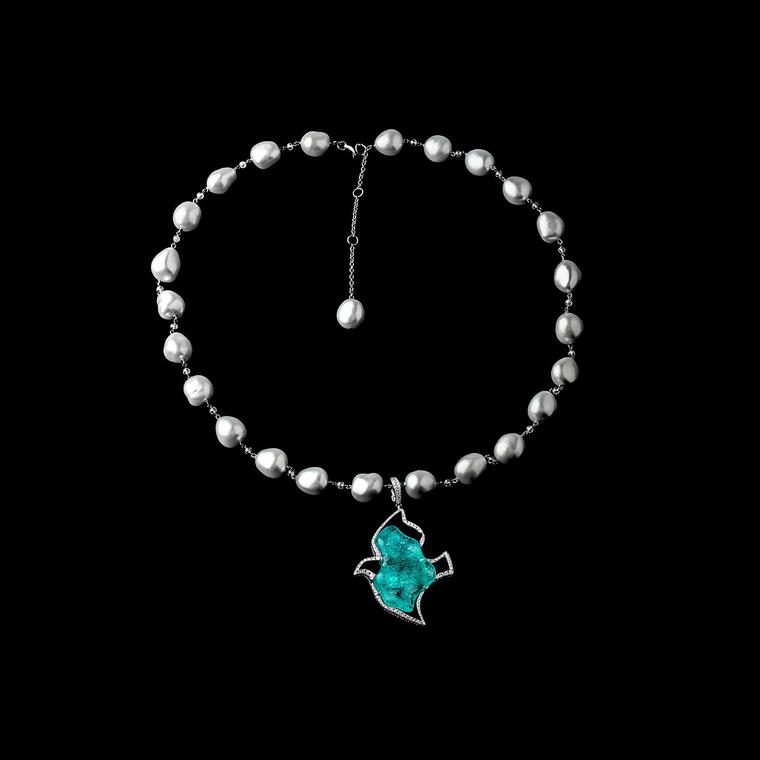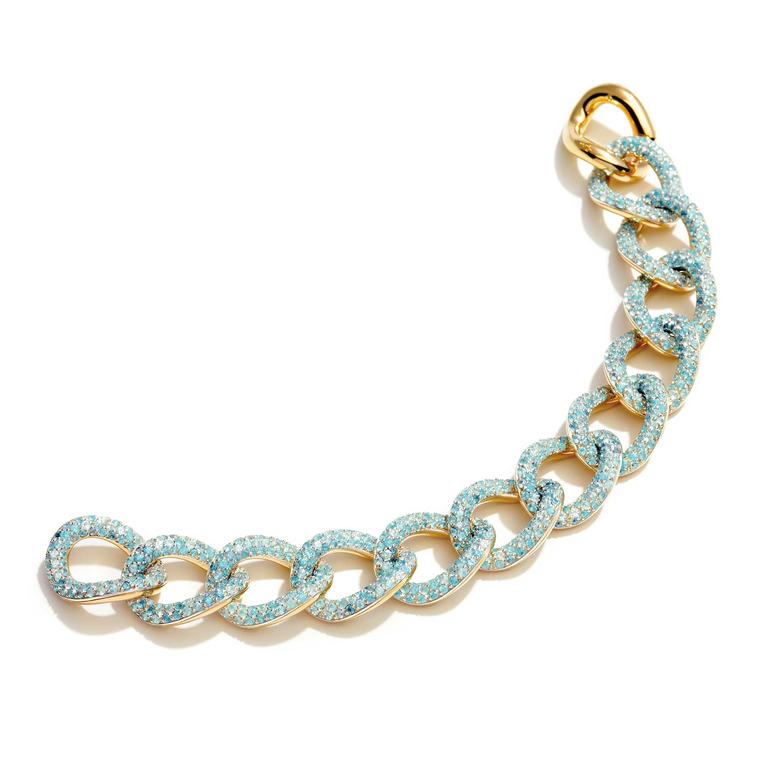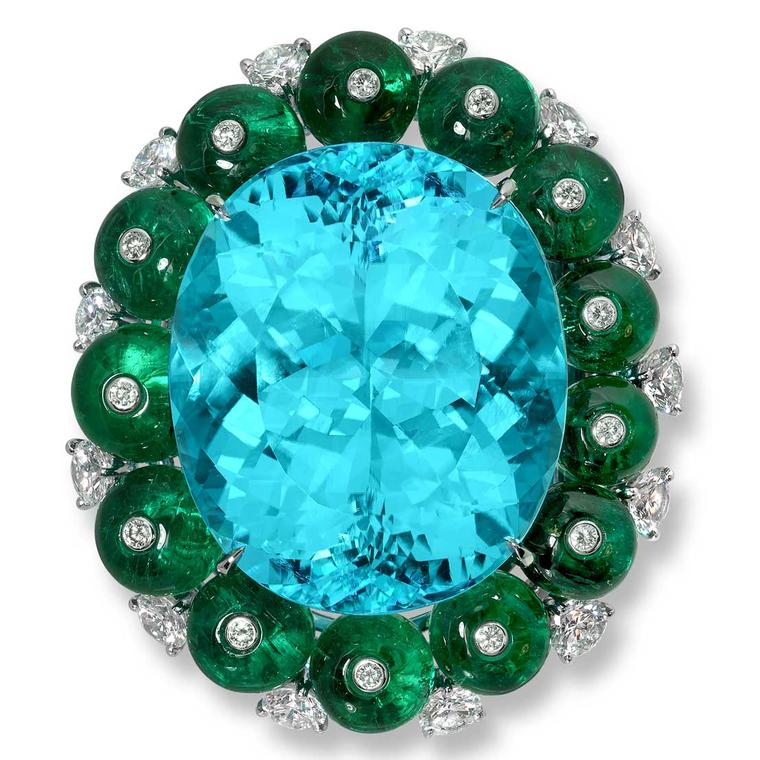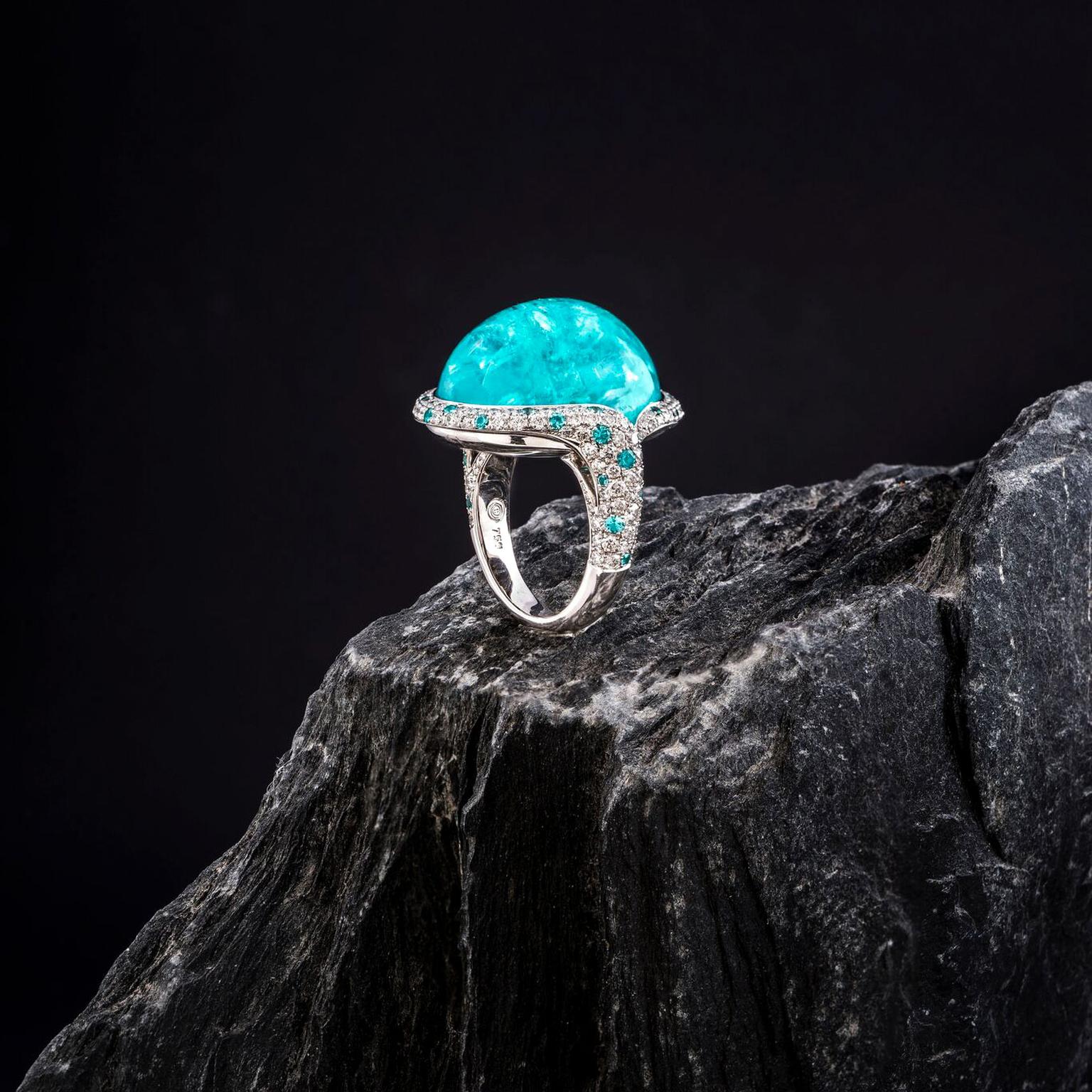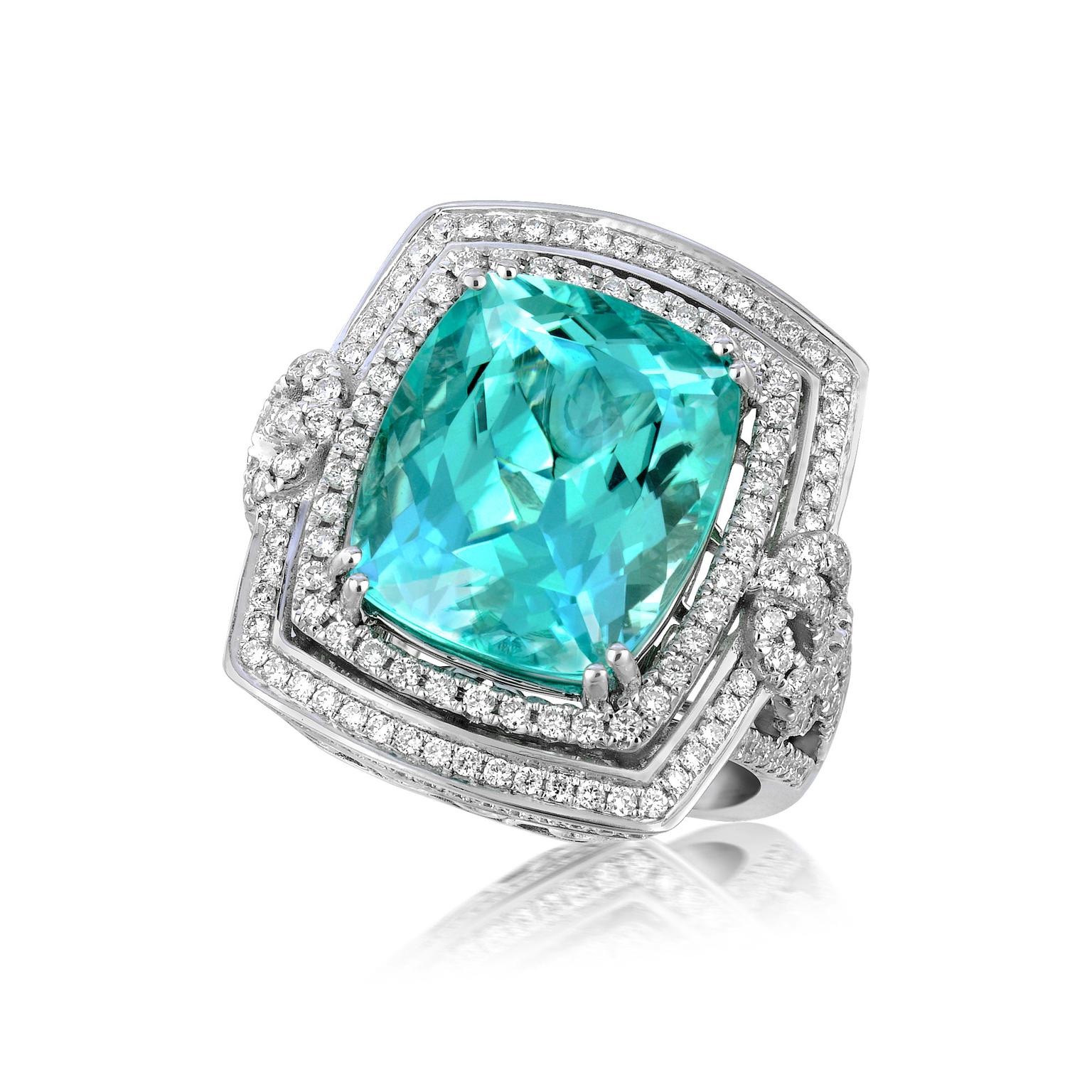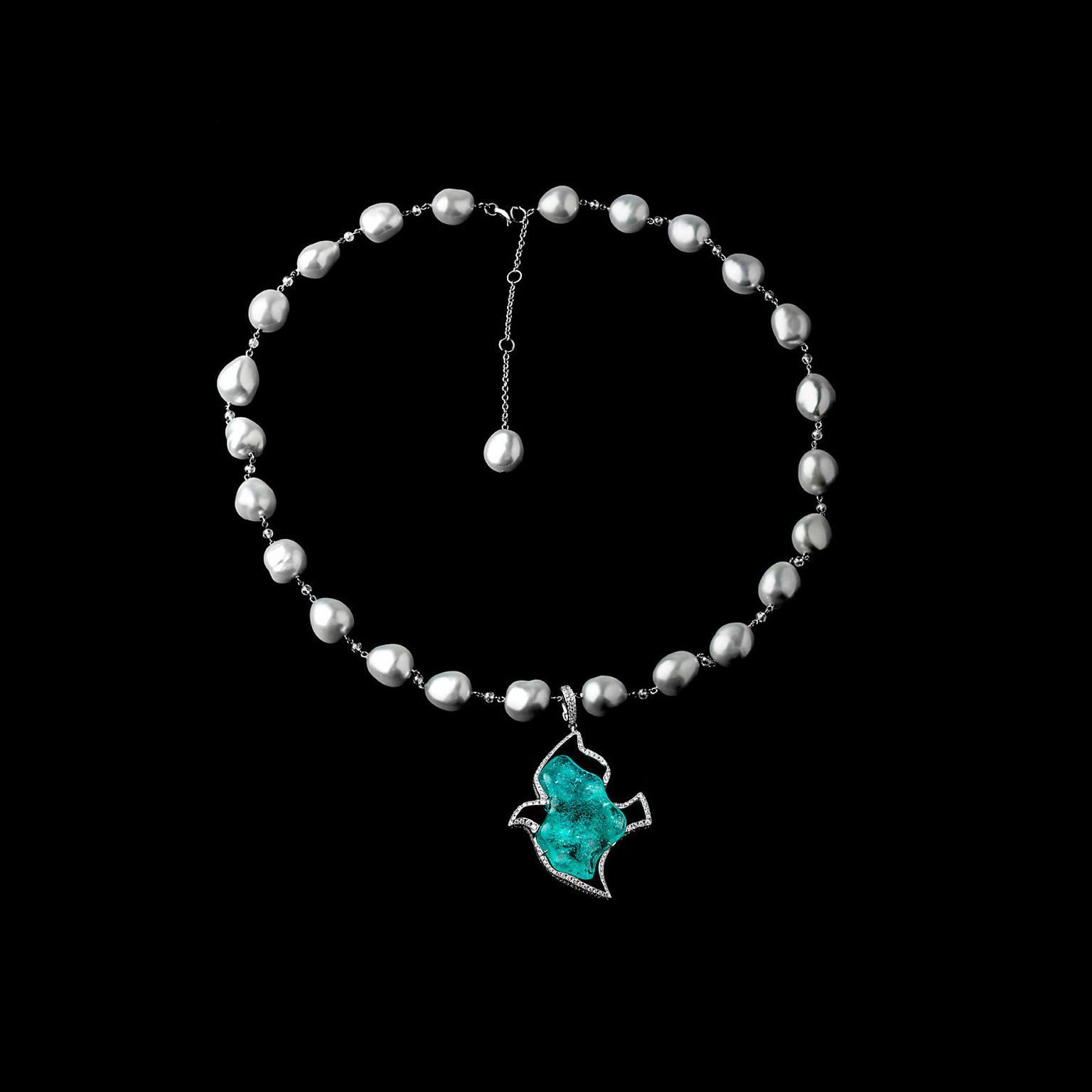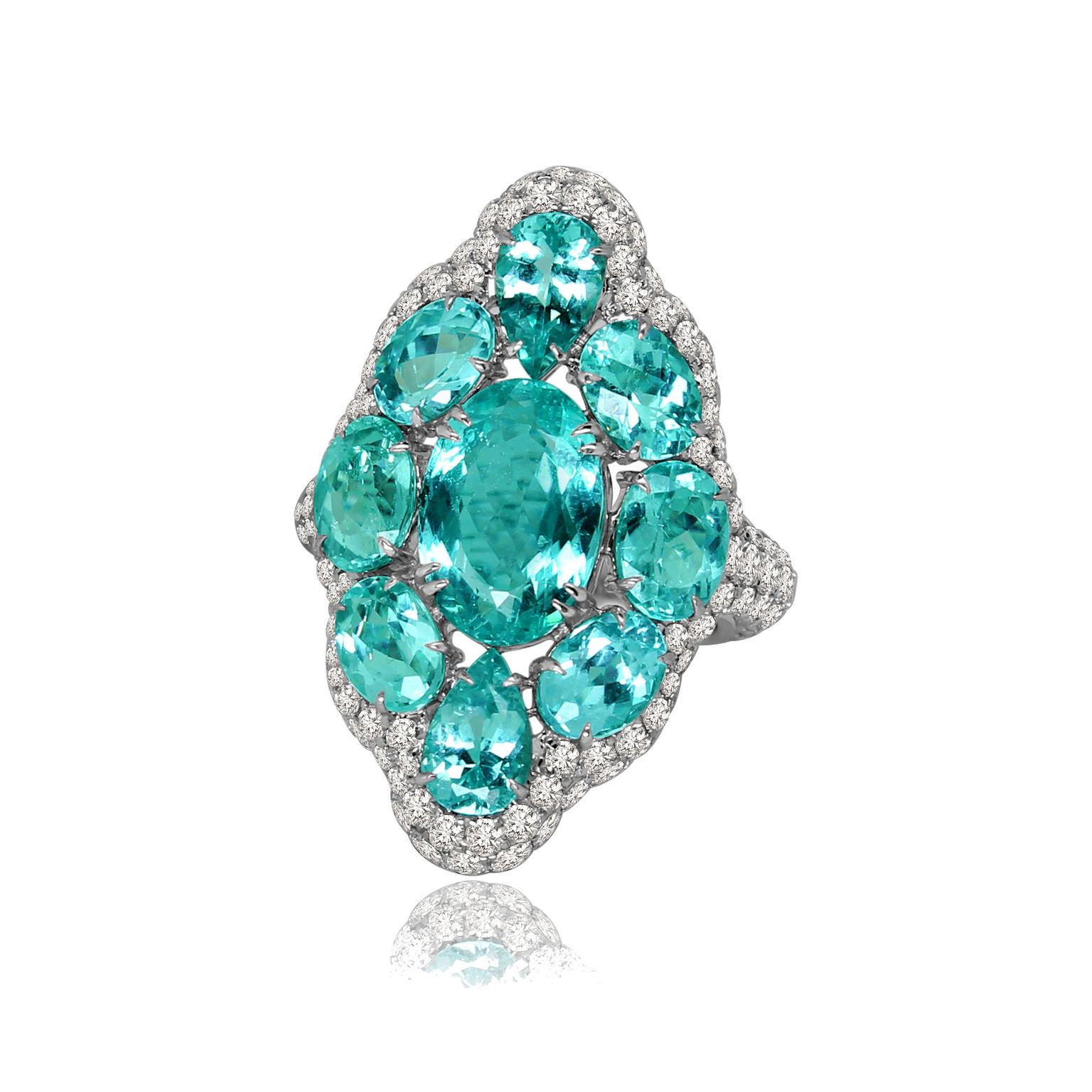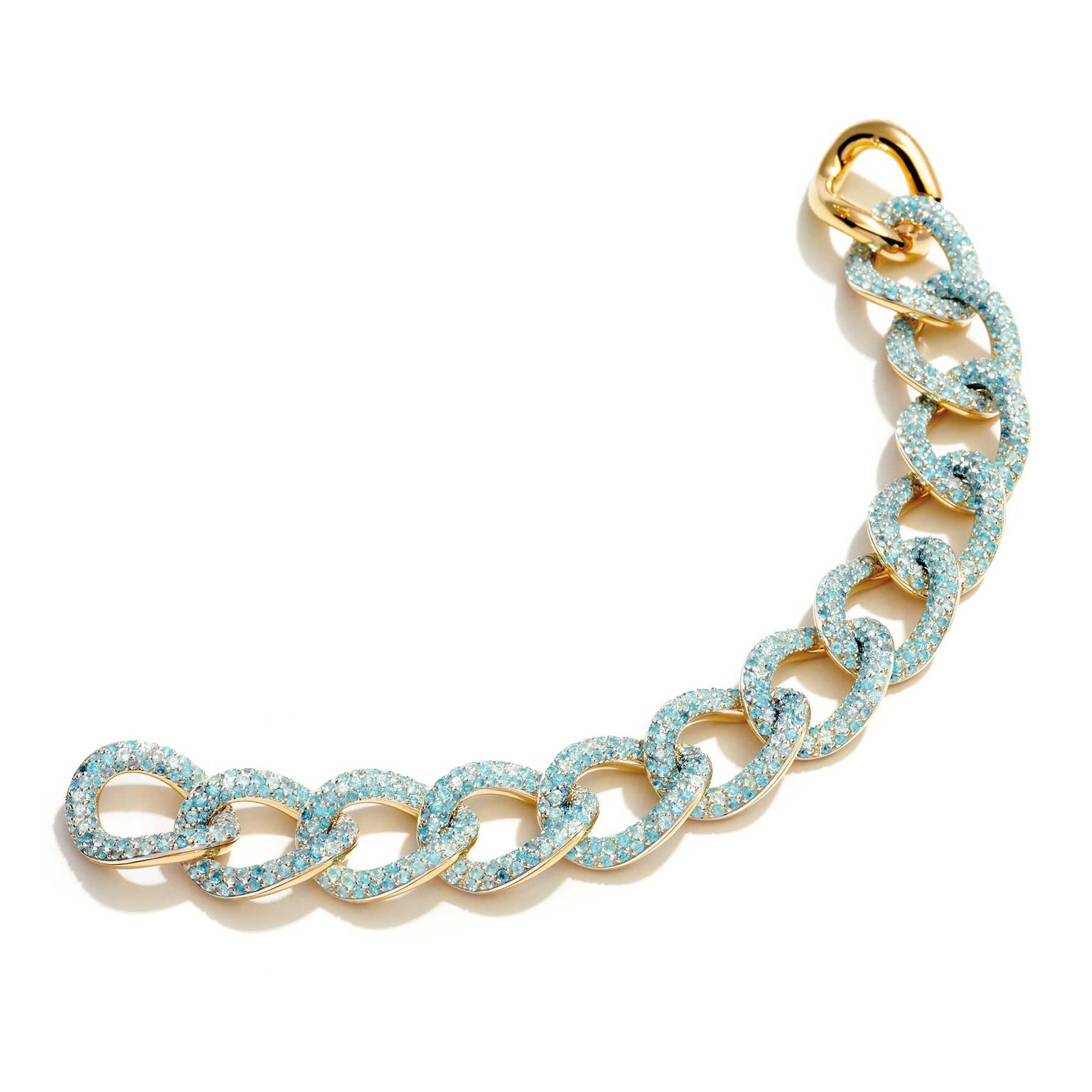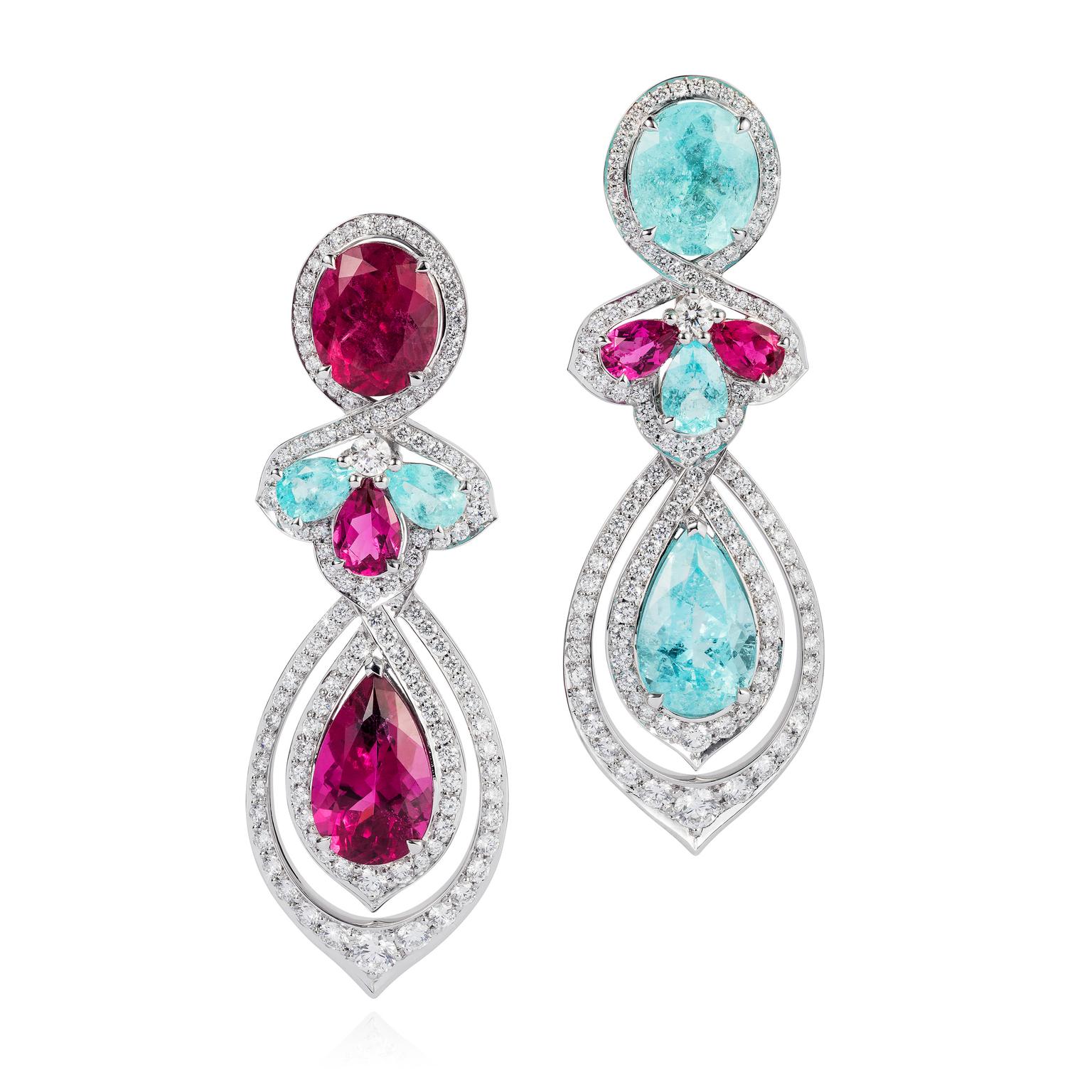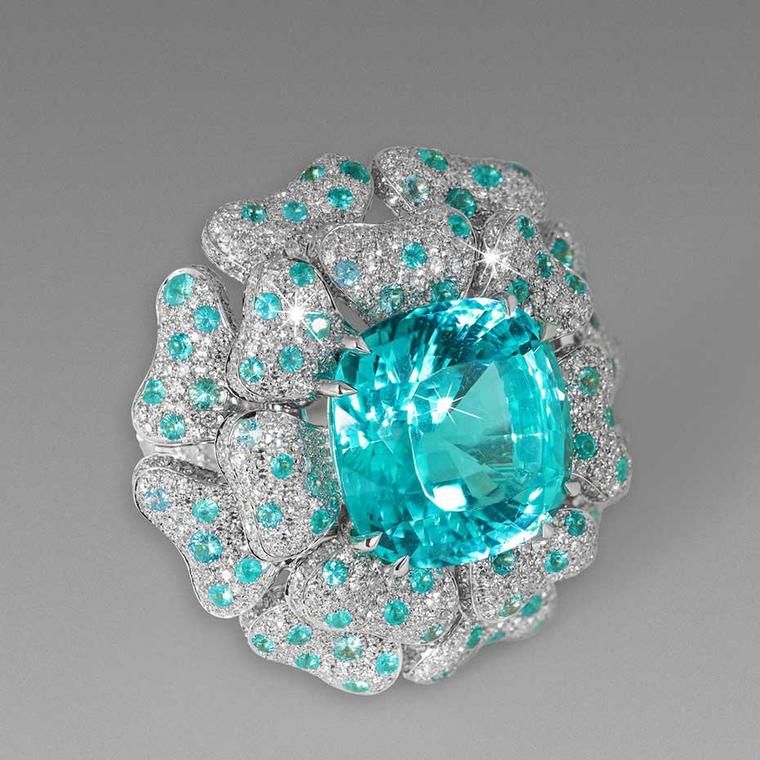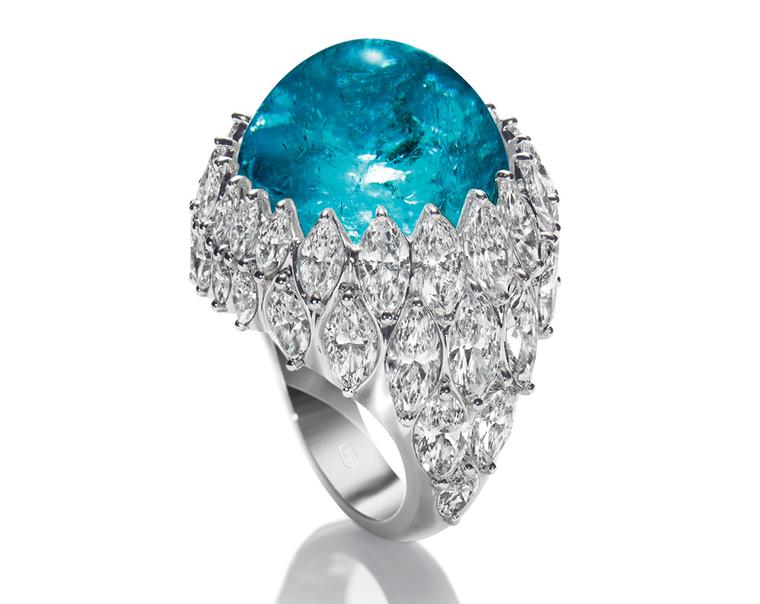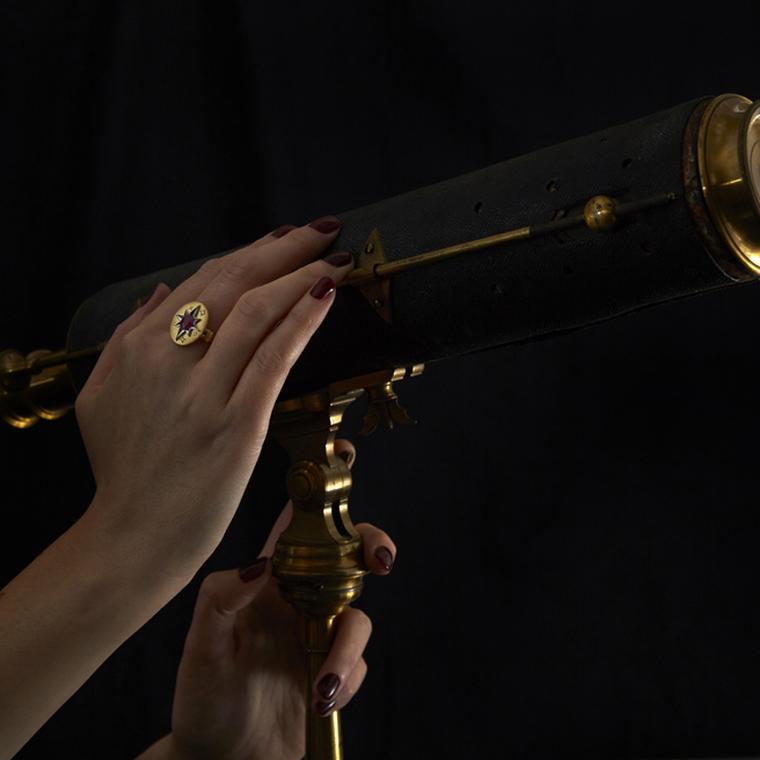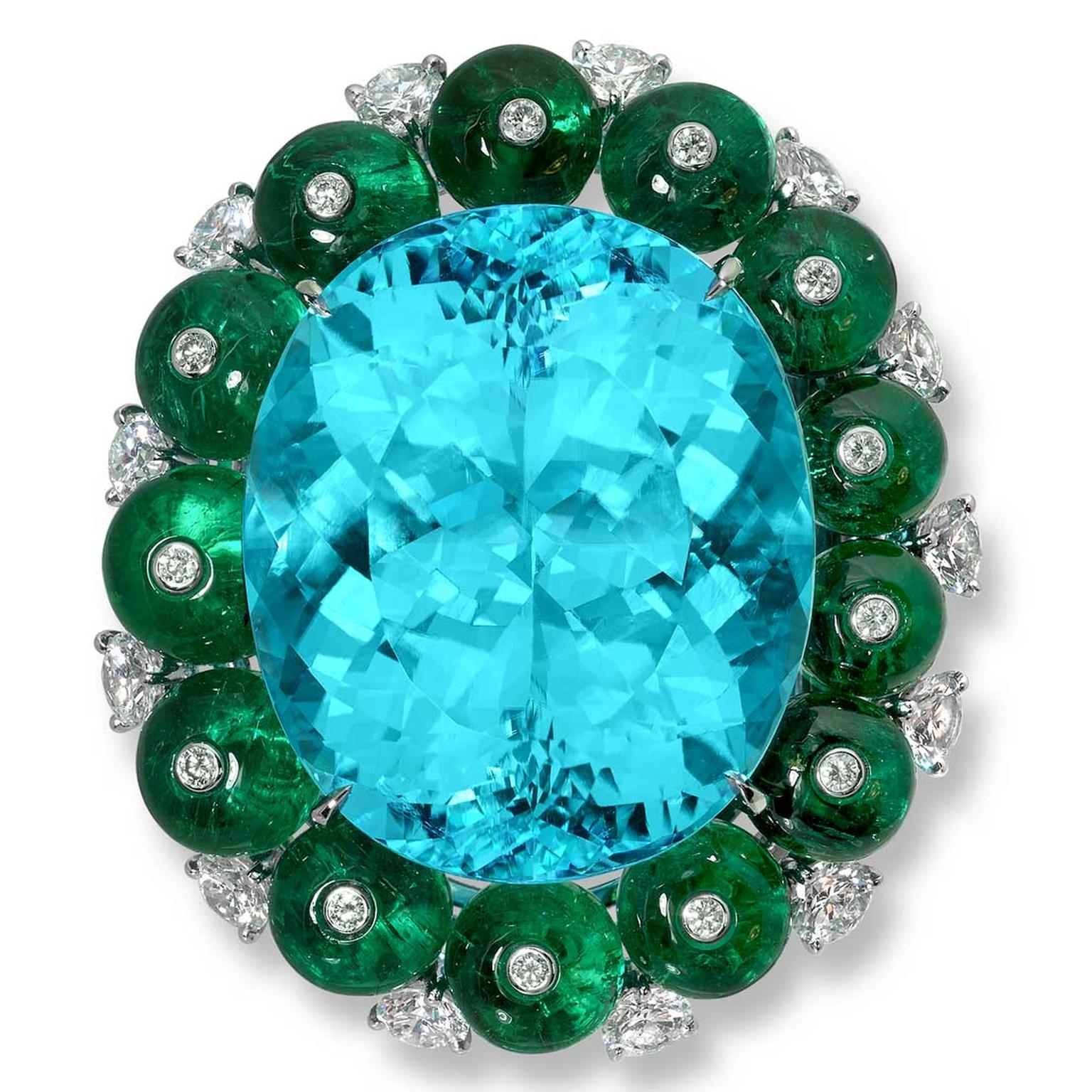
If the adjective Paraiba precedes the word tourmaline, you can expect to be greeted with an electrifyingly piece of jewellery featuring this azure gemstone, which has been mesmerising collectors since the early 1990s. Originally found in north-east Brazil, blue-greenParaiba tourmalines were later discovered in Mozambique and Nigeria - but what exactly are the differences between the two coloured gemstones?
The short answer is not very much. To the naked eye, African and Brazilian Paraiba tourmalines are indistinguishable, and even under a microscope it is hard to tell the difference. The Gemmological Institute of America, which grades and evaluates gemstones of all kinds, states: “Nigerian and Mozambique tourmalines, which show saturated blue-to-green colours, cannot be distinguished from the Brazilian material by standard gemmological testing.” Only quantitative chemical testing, it says, will show up differences in the stones.
As such, it has been widely agreed in gemmological circles that tourmalines displaying the same properties as those found in the original Paraiba mines of Brazil can be referred to as Paraiba tourmalines. This explains why some such African gems might still be referred to as Paraiba-like tourmalines, although this adjunct seems to be rapidly dropping off as the popularity of these stones rises.
However, despite the science, there are still some purists out there who prefer the originals, such as Vivien Yakopin of Genevan high jewellery boutique Les Facettes. “It’s like calling African rubies Burmese rubies,” exclaims Yakopin, who sells the work of jewellers such as Roxalana, Wendy Yue and Bao Bao Wan. “There are small chemical differences between the tourmalines from Brazil, Nigeria and Mozambique. The specific Paraiba tourmaline colour is due to traces of copper. The Mozambique tourmaline has less copper and is a touch lighter. Brazilian Paraibas are colours of blue to turquoise, while the Mozambique tourmalines have the widest ranges of colour.”
While the differences in colour and copper content can be debated, what really sets these gemstones apart is price and availability. As the mines in Brazil have been plundered for a decade longer than those in Africa, supply is dwindling. The Brazilian mines are almost completely exhausted and any new finds tend to be small stones. In Africa, supply is still plentiful and there is a steady flow of large Paraiba tourmalines. This, of course, has an effect on price. Due to their increased rarity and the fact that these were the originals, Brazilian Paraiba tourmalines carry a heavy premium.
Whether the colour, cost or carat is the most important distinguishing feature of a Paraiba tourmaline comes down to a matter of personal taste, but there are differences. So when buying one of these hypnotic gems, do make a point of asking whether you will be taking home a Paraiba from Paraiba, or a Paraiba-like tourmaline from Africa.
Updated by Maria Doulton July 2018


